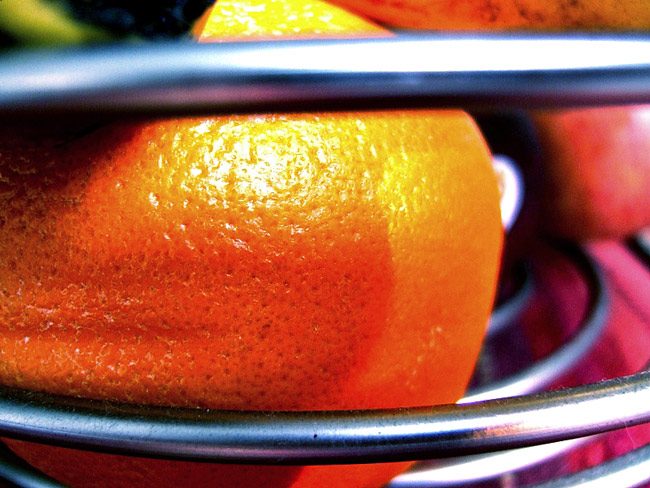
Coming off their worst harvest in five decades, citrus growers in Florida have fewer acres to work with, as they struggle to maintain the state’s signature crop against an incurable bacterial disease.
The citrus industry lost 4 percent of its grove land, 21,275 acres, over the past year, according to a survey released Monday by the U.S. Department of Agriculture.
The industry, now with less than half a million acres for production, has for years had to confront construction and population growth. Since 2005, the industry has also worked to fend off the ravages of citrus greening disease, which is deadly to the crop and has infected nearly all of Florida’s commercial citrus groves.
The release Monday from the USDA accompanying the survey doesn’t outline the cause for the overall decrease in acreage, but citrus leaders in Florida point to greening.
“The long-term future of Florida citrus, as well as the thousands of jobs and rural communities it supports, entirely depends on a breakthrough in the search for a solution to the existential threat that is greening,” Agriculture Commissioner Adam Putnam said in a statement Tuesday.
Production is down about two-thirds since its peak, “mostly” due to greening, said Andrew Meadows, a spokesman for Florida Citrus Mutual, an industry group based in Lakeland.
The USDA’s Annual Commercial Citrus Tree Inventory comes as growers prepare for the 2016-2017 season after producing just enough oranges in the prior harvest to fill 81.5 million 90-pound boxes. The harvest was almost 16 percent below the 2014-2015 season’s nearly five-decade-low of 96.8 million boxes.
The survey shows the state recorded new tree plantings that totaled 10,090 acres. However, of the 27 counties surveyed by the federal agency, all but three — Hendry, DeSoto and Charlotte — lost acreage in the past year.
Hendry, which leads the state with 10 million citrus trees, had the highest growth in acres, adding 512 acres and 275,200 trees from year to year.
Meanwhile, Polk County, which this year lost its two-decade hold as the largest citrus-producer in the state, reported the largest decrease in acreage, down 4,033 acres in the past year.
Both oranges and grapefruit, which make up the bulk of the state’s citrus crop, were down 16 percent in the 2015-2016 growing season from the prior harvest.
Tangerines were down 38 percent in the same time and tangelos were off 41 percent.
The top five citrus-producing counties are now Hendry, De Soto, Polk, Highlands and Hardee, which collectively account for 61 percent of the state’s production, according to the USDA survey.
Oranges constitute 87 percent of the citrus grown in the state, followed by grapefruit at 11 percent. Tangerines and tangelos represent the remaining two percent.
The first forecast for the next growing season is due from the USDA in one month, but early indicators have not been positive.
The state budget that went into effect July 1 includes $8 million to help fight citrus greening and $14.7 million for a citrus health response program within the Department of Agriculture and Consumer Services.
The U.S. House Ways and Means Committee is due to vote Wednesday on legislation introduced by U.S. Rep. Vern Buchanan, R-Fla., and U.S. Rep. Patrick Murphy, D-Fla., that would provide tax incentives to farmers who cannot afford to replace trees affected by citrus greening.
“Congress should do all it can to support jobs,” Buchanan said in a release on Tuesday. “My bill will help protect Florida’s iconic orange trees as well as the livelihoods of 62,000 Floridians who work in the citrus industry.”
Buchanan’s office noted that experts expect “a 26 percent decline in the state’s orange crop for this upcoming season.”
The Senate version of the proposal is sponsored by Sen. Marco Rubio, R-Fla., and Sen. Bill Nelson, D-Fla.
To prepare for next season, the Florida Department of Citrus crafted a $20.7 million budget based on a projection of up to 68 million boxes being filled. The agency’s budget, nearly $10 million lower than in the current year, will also see a reduction in a tax growers pay to fund the department, something larger growers and Gov. Rick Scott demanded earlier this year.
A tax on each box helps fund the Department of Citrus.
While the final budget and the “box tax” rates on growers won’t be set until October, the plan as it now stands would drop the rate from 23 cents to 10 cents on each 90-pound box of processed oranges. The tax could go from 19 cents to 10 cents for each box of grapefruits.
–Jim Turner, News Service of Florida





























palmcoaster says
Don’t tax the growers per box at least one year or two until they recover from this devastating green pest, so our signature crops can survive. Help those farmers and farm workers!
Instead tax developers that get too much for free from us in Florida.
Born and Raised Here says
We had acres and acres of Orange Groves when I was a kid. Then the developers came.